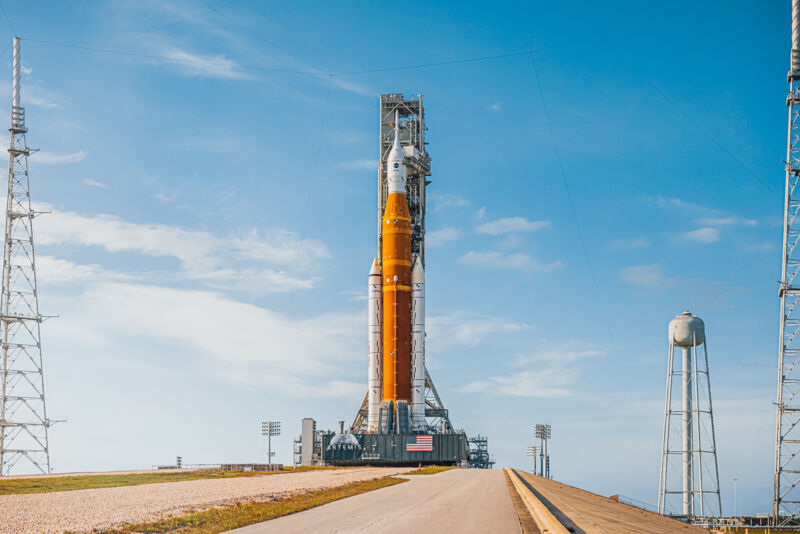Is tonight the night that NASA’s massive SLS rocket finally takes flight?

Trevor Mahlmann
KENNEDY SPACE CENTER, Fla.—After writing about NASA’s Space Launch System rocket for a dozen years—certainly well into the hundreds of thousands of words—I’ve run out of things to say about the big, orange booster.
Well, almost. What I would like to say is that it is time, beyond time really, for this mission to fly.
As NASA has sought to build public interest in the Artemis program and spur momentum for the Artemis I launch of an uncrewed Orion spacecraft to the Moon and back, the space agency has increasingly used the slogan, “We are going.”
The response from much of the space community to this can be succinctly stated: “We are ready for you to go.”
As one looks ahead to tonight’s launch attempt, with a two-hour window opening at 1:04 am ET (06:04 UTC), it is worth looking back at what has come before to understand why this moment is so overdue.
The Space Launch System rocket was created in 2010 by just two US senators—a Democrat from Florida, Bill Nelson, and a Republican from Texas, Kay Bailey Hutchison. Hutchison retired in 2013, and Nelson lost reelection in 2019, so the rocket’s long and costly development program has outlived both of their political careers.
The SLS rocket was a political compromise, keeping major defense contractors who previously had a piece of the space shuttle program on NASA’s budget and preserving space agency jobs in Florida, Texas, and Alabama. It worked so very well at that.
Unfortunately, politically constructed rockets are not the most efficient spaceflight vehicles, so it has been a long road, filled with potholes, to reach the launch pad.
2010
When Nelson and Hutchison first conceived of this rocket design in 2010, working closely with Boeing and other major contractors, hopes were high. The rocket would use space shuttle main engines and a slightly modified version of its solid rocket boosters. The main propellant tank would have the same diameter as the shuttle’s external tanks. This would greatly ease the development path, the senators explained.
That summer, they negotiated with key figures in the US House, such as the chairman of the Science Committee, Bart Gordon of Tennessee. Nelson promised the rocket would be ready by 2015 at a cost of $11.5 billion. Gordon knew better. “He doesn’t think we can do a heavy-lift rocket for $11.5 billion,” Nelson said of Gordon at the time. “If we can’t do a rocket for $11.5 billion, we ought to close up shop.”
Eventually, Nelson and Hutchison would get their legislation in the form of a NASA Authorization bill. By that fall, the schedule had already slipped a little. When the legislation creating the rocket was signed into law in October 2010, the Space Launch System was intended to be operational no later than December 2016. It was the law of the land.
2014
Four years later, NASA reached its first milestone in developing a…
Read More: Is tonight the night that NASA’s massive SLS rocket finally takes flight?
